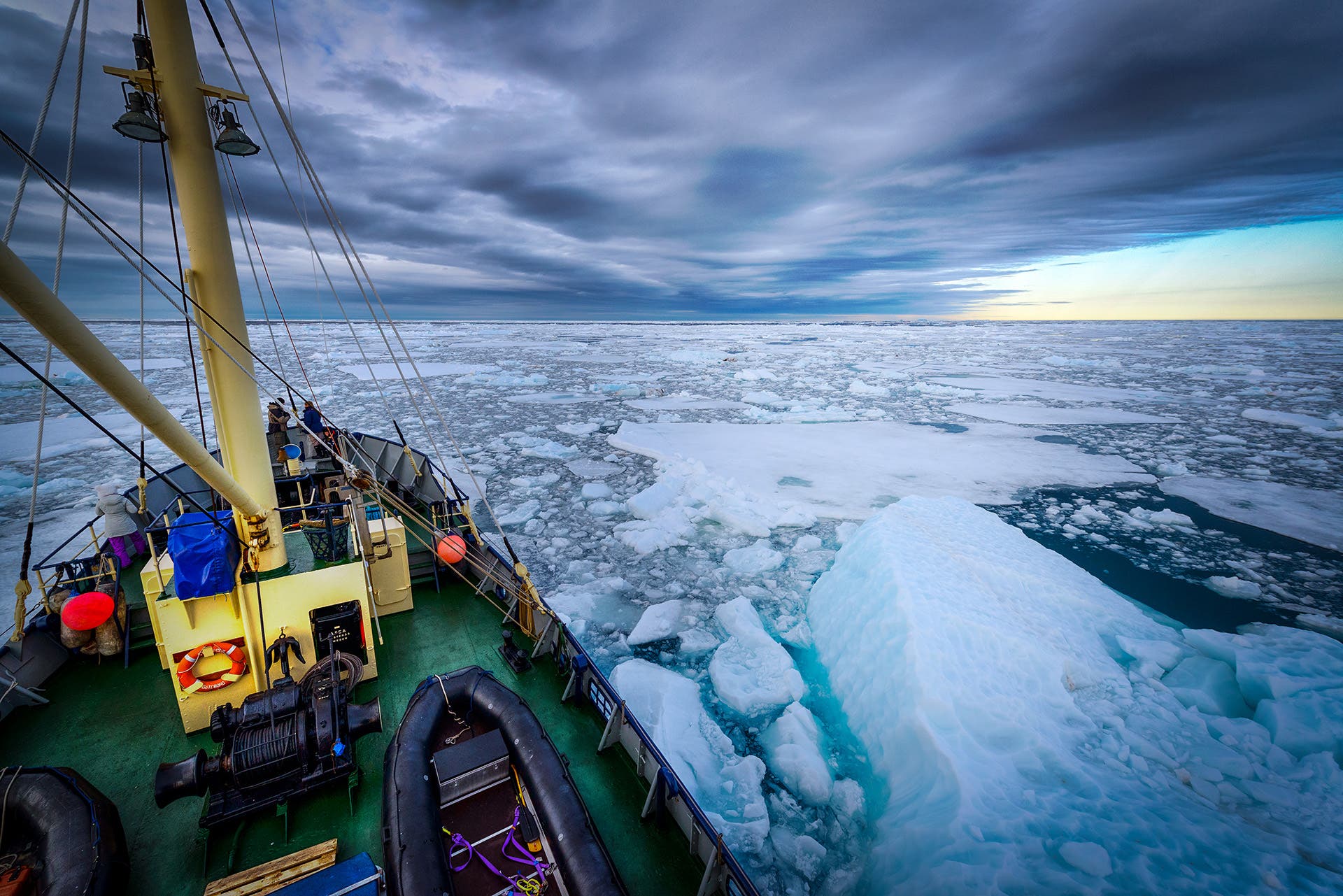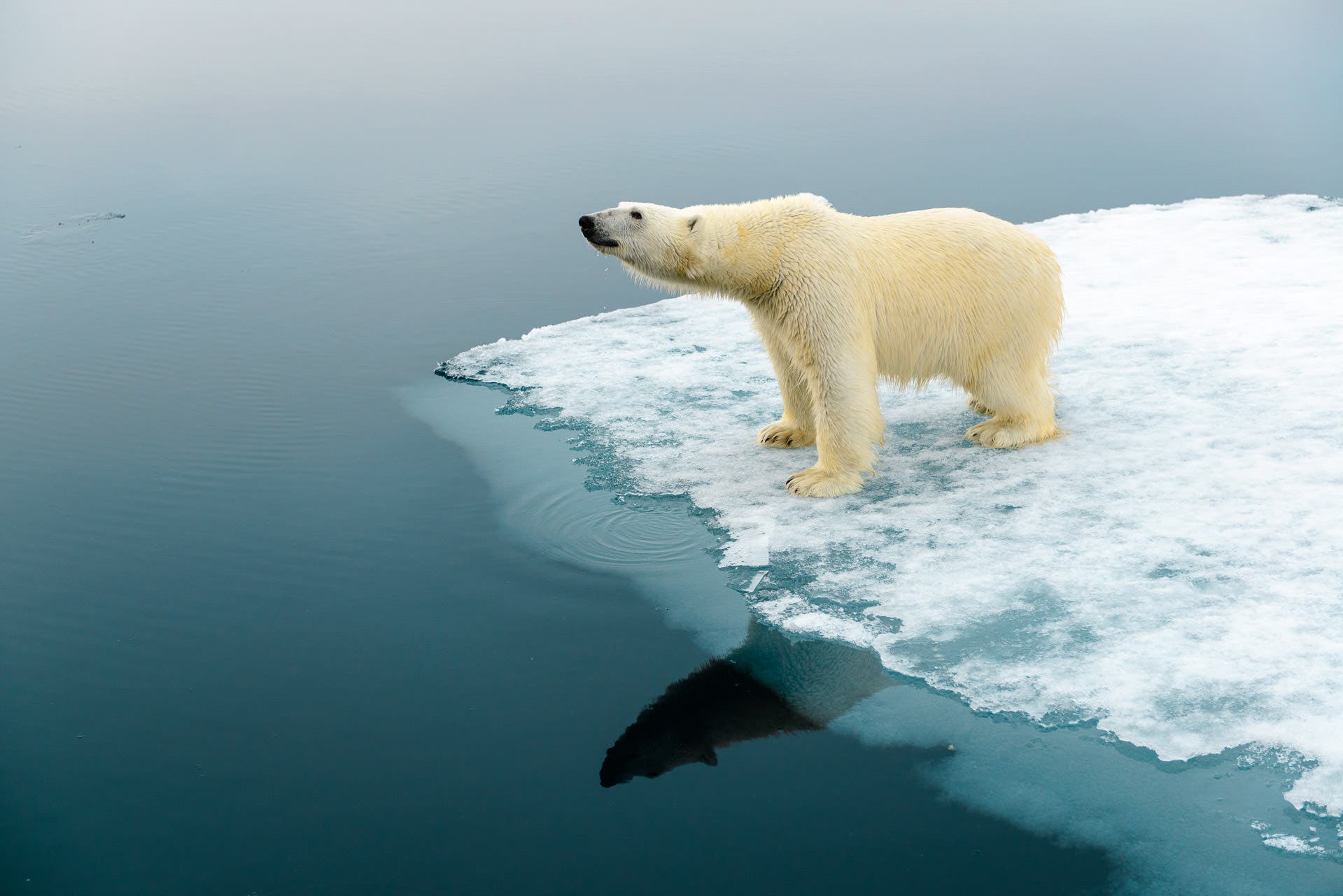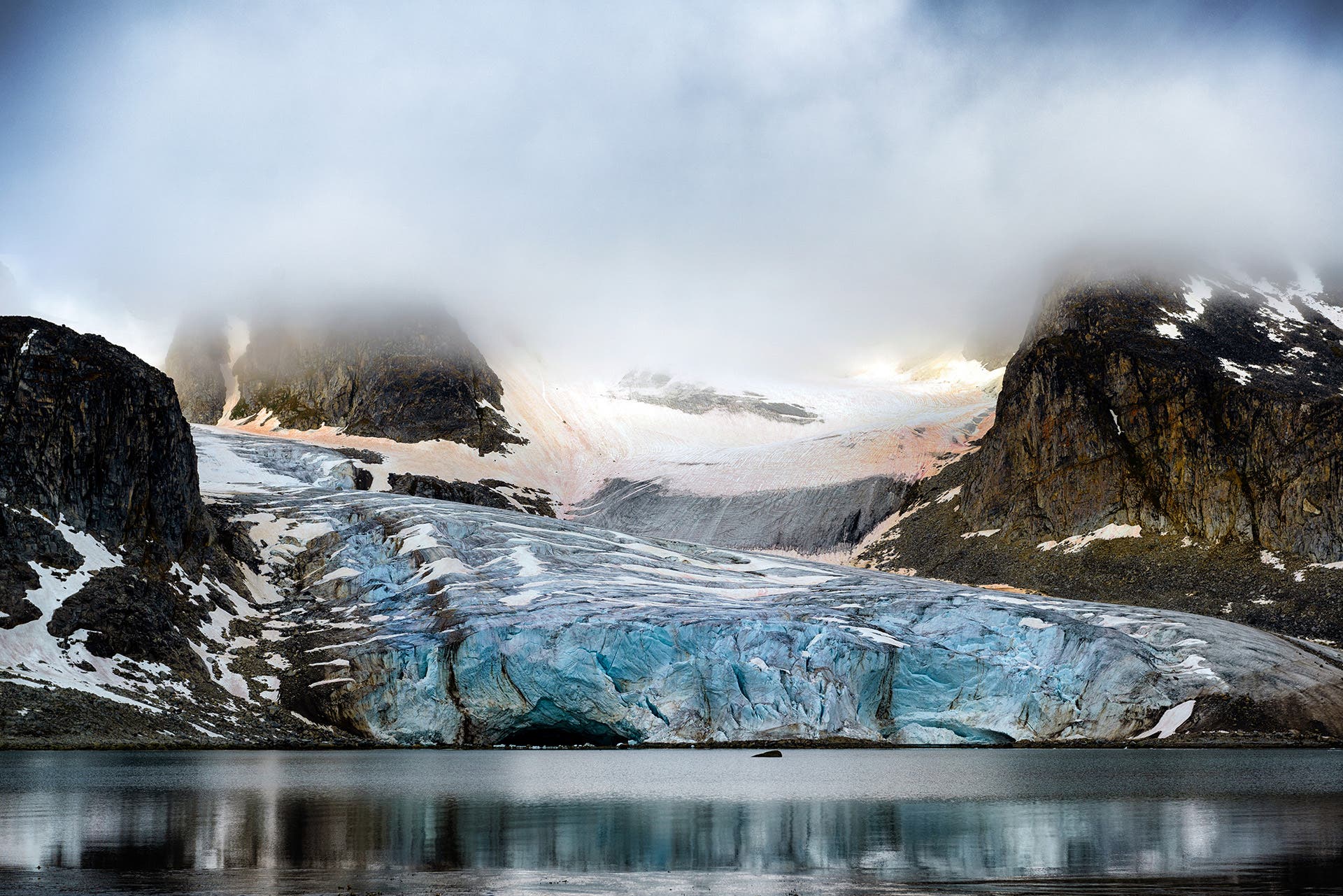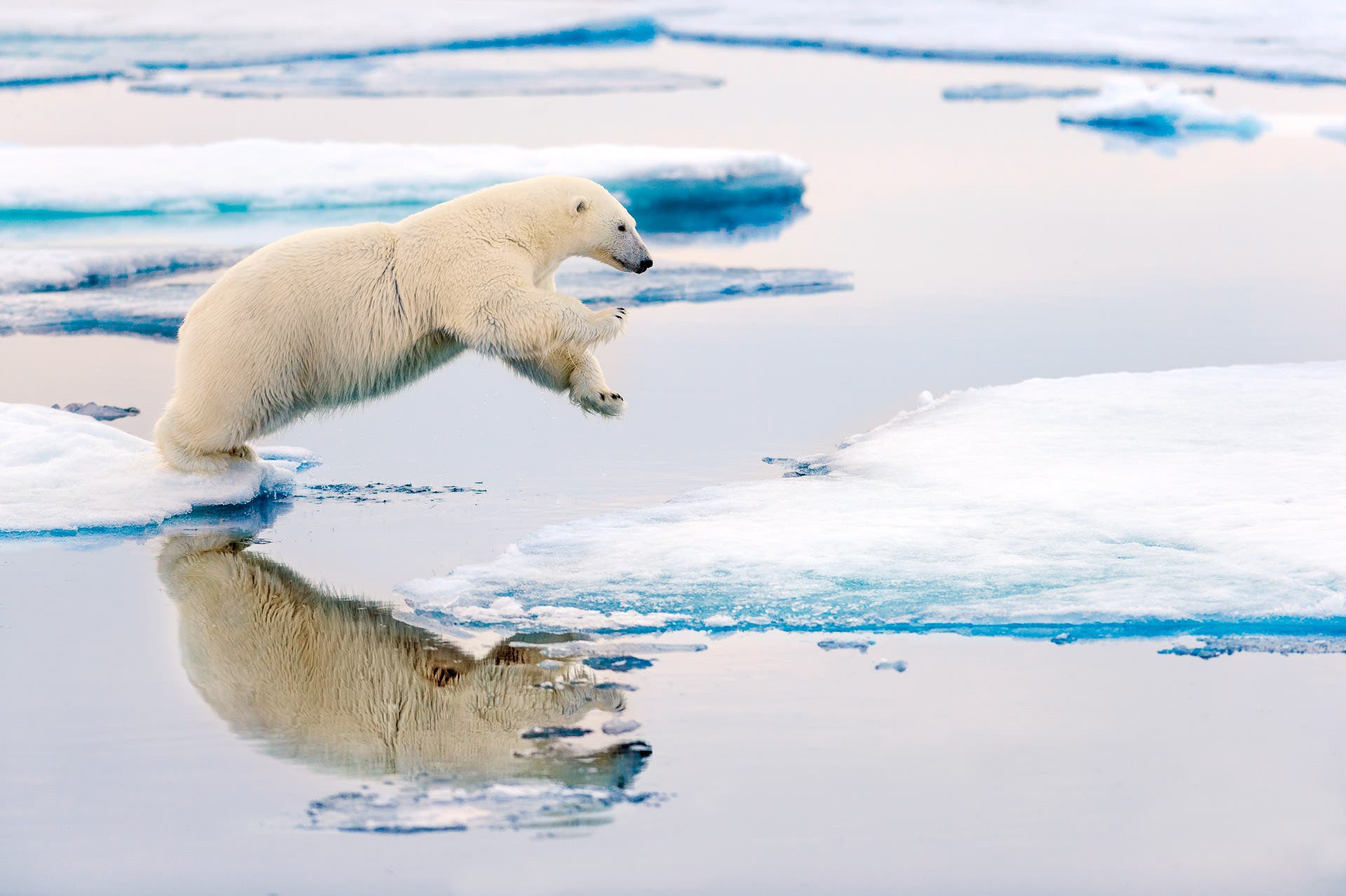
Nikon D800E, Nikkor 14-24mm Lens, 1/500 second at f8, ISO200.
With the threat of global warming and the extinction of many of the earth’s incredible wildlife species, the changing face of the planet around us reminds me that part of being a photographer is our ability to record what we see around us, today, and use that imagery to recognise and hopefully better protect our planet for future generations. My kids included. Which leaves me feeling fairly humbled when I have the opportunity to travel a little further afield than normal to photograph the elusive polar bear that inhabit the shrinking polar landscape of the Arctic Circle.

I was in Norway leading a photographic group for Journeys Unforgettable, a tour company based in the US that runs photography trips all around the world. Together with expedition leader Rinie Van Meurs, we would be taking our group of guests north towards the North Pole aboard the M/S Stockholm – our floating home for the next ten nights.
Built in 1953 for the Swedish National Maritime Administration, the Stockholm has since been refitted and now has a productive career as a very comfortable polar passenger ship. With room for only 12 guests on board, it was an intimate and friendly group. Our journey started in Longyearbyen, the largest settlement on the island of Spitsbergen in the Svalbard Archipelago. At 78 degrees N. latitude, Svalbard is a Norwegian territory that lies halfway between continental Norway and the North Pole. After group introductions, it was time to board our vessel as we eagerly anticipated our ocean-bound adventure.


The first day and a half saw us sailing the coast of Spitsbergen past incredible glacial scenery and low hanging fog before finally waving goodbye to shore and heading out to sea. We would be following the edge of the pack ice northwards, and none of us knew quite what to expect. But the skies were clear, the seas were calm and the mood was one of keen expectation… The one thing we were all sure of was that this was going to be a “once in a lifetime” expedition for everyone on board.
Breaking your way through immense sheets of solid, frozen ice is an experience like no other. The ship cruises at a constant speed as it slowly rides up onto the ice before coming down to break through and continue forward. The crack and grate of the ice on the hull of the boat echoes and vibrates in a way that contrasts with what you would normally hope to hear while afloat! However while the noise and the movement are somewhat disturbing on the first day, we all very quickly got used to it and the sound became a familiar companion during the trip, in fact, the silence was almost eerie whenever the creaking ice was absent. Watching the ice slide past was entirely mesmerising and it was easy to stand at the ship’s rails transfixed as we slowly covered the miles north.


Expedition leader Rinie, however kept his eyes fixed firmly on the horizon, using binoculars to search for and spot distant polar bears. His ability to spot them from far away was simply incredible. Often he would point them out to us and we still couldn’t see them until we were much closer. His record for spotting a bear at a distance was 6.8 nautical miles (nearly 13 km) which we worked out using GPS tags when we eventually reached the bear. On spotting any wildlife or features of interest, we would approach slowly either in the M/S Stockholm itself or by the inflatable rib tender boat, often going “ashore” (or onto the pack ice) when conditions were suitable. Gulls would hover and chase the tender boat, diving in whenever we broke through the ice to catch the arctic cod that live beneath the frozen surface.
The main focus of our trip – polar bears, were only ever viewed from on board the M/S Stockholm, where we would move in slowly from upwind if possible. If the bears could smell us they would approach the ship themselves to investigate – we don’t follow the bears and we move on when they do, leaving them to the constant and daily necessity of wandering the edge of the pack ice hunting for their next meal. Although bear attacks are rare, safety precautions are stringent and Rinie carried flares and a gun anytime we left the expedition vessel.



In total we saw and photographed 23 individual bears, most out on the edge of the pack ice though we also saw mother and cubs closer in on land. Polar bears, unlike their brown bear cousins, are active year-round though they will often fast through the summer months when restricted to land by the melting ice shelf. An adult male bear can weigh up to 700kgs and measure up to 3 metres in length making them the largest living species of land predator, slightly larger than the Grizzly bears I have previously photographed in Alaska. Observing and photographing them from our water based home in such an incredible and mesmerising environment was definitely one of the highlights of my photography career to date, a sentiment readily shared by my guests on board the cruise. And if sharing images of these amazing creatures help protect their environment for the future then it’s a job well done.

Alongside the polar bears we also saw massive walrus with their curved tusks and bristly moustaches, harbour seals, bearded seals, blue whales and any number of migrant sea bird species that spend their summers in the arctic. For those of us briefly visiting the region, it was all we could have hoped for and more… Though of course for some of us, once is never enough and I can’t wait until my return in 2017 to lead another group on a similar adventure. Care to join us?






